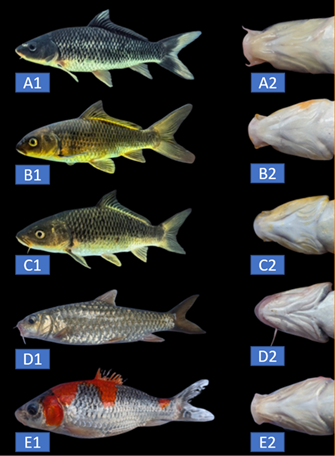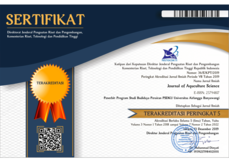Natural Occurrence of Hybrid Koi and Mahseer in Artificial Ponds: Evidence of The Dangers of Releasing Non-Native Fish into The Wild

The introduction of non-native species into new environments poses significant ecological risks, including the potential for hybridization with native species, leading to genetic pollution and the creation of hybrid species. This study investigates the natural occurrence of hybridization between koi (Cyprinus carpio var. koi), an ornamental species, and the native mahseer (Tor dourorensis) in an artificial pond in Padang, West Sumatra, Indonesia. The coexistence of these species over five years resulted in the emergence of hybrid offspring, which exhibited a blend of morphological traits from both parent species. Meristic and morphometric analyses revealed that the hybrids closely resembled mahseer in certain characteristics, particularly dorsal and caudal fin rays, while also displaying koi-like traits such as body color and fin shapes. The hybridization of these two species raises concerns about the genetic integrity of native mahseer populations and the potential ecological consequences. Hybrids may possess competitive advantages that could further threaten already vulnerable mahseer populations. The findings emphasize the urgent need for effective management strategies and regulations to prevent the release of non-native species into sensitive ecosystems. Public awareness campaigns and regulatory measures should be strengthened to mitigate the risks of hybridization and protect biodiversity in freshwater environments. This study serves as a critical reminder of the far-reaching consequences of introducing non-native species, particularly in regions with delicate ecological balances.
Copyright (c) 2025 Darmawan Setia Budi, Leonardo Davinci, Adam Pramudya Ardiyan, Muh. Herjayanto

This work is licensed under a Creative Commons Attribution-NonCommercial-ShareAlike 4.0 International License.



















